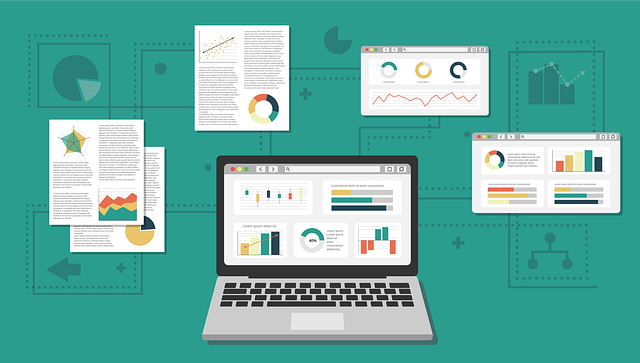 Marijana Gligoric
Marijana GligoricTop Strategies to Reduce Churn SaaS Companies Swear By

Benjamin Franklin, one of the founding fathers, once famously quipped: "Beware of little expenses – a small leak will sink a great ship."
Now, there's more than one way to approach the problem of a leaky ship. You could have all the men onboard collect and dispose of the water. Also, if circumstances allow it, you could scrap the ship entirely and build a new one.
But wouldn't the least painful solution be to plug the hole and be on with it?
Yes, it would.
So it is with ships, and so it is with SaaS businesses. Simply preventing customers from leaving your SaaS business is a better solution than wasting resources scrambling for new ones or creating a new business model entirely.
Reducing customer churn is easier than the alternative and will keep your ship afloat.
What is Customer Churn?
Customer churn, also sometimes referred to as customer attrition, is the number of customers who stop using your product over time. In SaaS, churn measures the number of customers who cancel or don't renew their subscriptions for your software over a given period.
It's a metric that needs to be tracked regardless of the growth stage that your SaaS business is currently in.
Why Does Customer Churn Matter?
Churn is especially relevant for SaaS businesses because they mostly rely on a subscription-based pricing model. Customers who cancel their subscriptions early deny the company a chance to recover the funds that went into acquiring them.
The cost of getting customers to use a product, also known as CAC (customer acquisition cost), is always higher than the cost of retaining them.
Reducing churn not only boosts profitability but also increases customer lifetime value, which is a key metric for understanding the long-term financial impact of each customer.
A study conducted by Bain & Company found that businesses that manage to increase their retention by 5% can expect to increase their profits by a minimum of 25%.
That's why measuring customer churn, analyzing at which point of the user journey they're churning, and creating strategies to retain customers is a top-priority for running a profitable SaaS business.
No, Seriously, Churn Really Matters
Thinking of customer churn simply as a loss of subscription revenue is an oversimplified view. The effects are more detrimental when you think about the lost potential that it brings about.
Firstly, each customer that leaves your product could've referred it to who knows how many people. Secondly, dissatisfied customers are likely to leave negative reviews and spread negative word-of-mouth.
Making expansion revenue through upselling and cross-selling also goes out the window. And let's not forget the impact these negative reviews can have on the people developing the product and the rest of the organization's morale.
So, you see, lowering the churn rate is not just a revenue solution – it's a reputational and morale booster that can help a business reach new heights.
Calculating and Analyzing Customer Churn

Understanding and measuring churn helps you gain insights that can transform your SaaS business. Taken together, calculating churn rates, distinguishing between customer and revenue churn, benchmarking against industry standards, and identifying root causes tell the story of your company's health and future trajectory.
How to Calculate the Customer Churn Rate
Calculating churn is simple.
You only need the following info:
-
The period over which you're measuring churn(month, quarter, year, etc.)
-
The number of customers you had at the beginning of the period
-
The number of customers lost during that same period
To calculate churn, divide the number of customers lost over a period by the number of customers you had and then multiply this by 100 to get a percentage.
So, let's say you're measuring a fictional company's churn rate for September. The company had 500 customers at the beginning of September and lost 5 customers by the end of the month. That means the churn rate is (5/500) x 100 or 1%.
An important caveat is that customers acquired during September do not factor into the equation. This makes sense because including the customers acquired over the same period would artificially decrease the churn rate and provide an inaccurate view of retention.
These newly acquired customers haven't had enough time to churn, and their inclusion would skew the churn rate and make the retention numbers look better than they are.
Customer Churn and Revenue Churn
Customer churn is the number of customers a business loses over a period. Revenue churn is the revenue a company loses over a period owing to customers leaving. Both metrics are important as they tell different stories about your business.
Customer churn, known as logo churn, shows an image of overall customer satisfaction and product stickiness. Revenue churn shows the financial impact of churn and is a better indicator of economic health.
A business that loses many customers but gains expansion revenue (revenue from customers purchasing upgrades) over the same period could simultaneously have a healthy revenue and a problematic customer churn rate.
So, customer churn is more significant for businesses where contract values don't vary widely across customers, while revenue churn is more important for companies where they do.
What Should the Churn Rate Be ?
Churn rates can vary significantly by industry and the growth stage the company is in.
As a rule, large enterprises have lower churn rates than startups and medium-sized businesses.
For SaaS companies, the standard churn rates look something like this:
-
Startup companies can expect a churn rate of over 5% per month
-
Scaleups (growth-stage companies) typically churn at 3-5% monthly.
-
Enterprises churn at < 2% monthly.
What Causes Customer Churn
Customers have different reasons for abandoning a product.
Some problems can be solved quickly, while others are deep-rooted and may require a complete product overhaul and a strategy shift at the highest level.
Here are the top 4 issues affecting customer churn:
-
Product-market fit – Customers may be churning at a high level because your product doesn't address their pain points, and they don't see enough value in it.
-
Poor user experience and onboarding – Your product may have a steep learning curve and a complex interface. Combine that with a confusing onboarding process, and churn is guaranteed.
-
Customer support issues – Poor communication regarding critical issues can send customers packing fast. So can slow response times and a lack of personalized support.
-
Pricing issues – Dishonest practices like price hikes and hidden costs are detrimental in the long run. Outside factors like lower-cost competitors and economic slumps can also play a role.
Any of these issues alone can significantly increase churn if left unattended. That's why the most successful SaaS companies take them seriously and have detailed strategies in place to deal with all of them.
Effective Customer Retention Strategies

Now that we understand what drives customers away, let's take a look at field-tested strategies that reduce customer churn and keep them engaged and loyal.
From identifying silent churners before they slip away to building proactive support systems, successful SaaS companies employ multiple approaches to build strong customer relationships. Here's how industry leaders tackle the challenge of retention head-on.
Addressing Silent Churn

The famous author T.S. Eliot once wrote in one of his poems:
"This is the way the world ends
Not with a bang but a whimper."
We're not sure about the world, but he hit the nail on the head regarding churn and SaaS businesses. Most customers who churn gradually fall out of love with the product over a long period.
These silent, passive churners often pay subscriptions for months while using the product less and less. And they're hard to identify as they rarely contact support and aren't vocal about their intentions to leave.
That's why great SaaS companies pay attention to declining usage patterns and are on a constant lookout for:
-
Lower login frequency
-
Shorter sessions
-
Decreased variety in using features
-
Fewer active users per account
-
Decreases in importing/exporting data
-
Lowers response rates to emails
-
Missed check-in calls
-
Sitting out training sessions/webinars
Paying attention to these signals and proactively addressing them can reinvigorate these passive churners or at least spare the businesses a long, drawn-out separation where customers leave bitter and resentful.
Proactive vs Reactive Approach to Combating Churn

When it comes to combating churn, businesses can take both proactive and reactive measures. Proactive measures are steps companies take to prevent churn before it occurs by addressing any issues early on and nipping them in the bud.
One of the measures great SaaS companies take is creating a stellar onboarding process where customers receive personalized, high-quality instructions on how to get the most out of their subscriptions.
They also create Customer Success teams and assign dedicated customer success managers to high-profile accounts who regularly check in and gather customer feedback, address any concerns proactively, and ensure clients can use the software to achieve their goals.
Reactive measures, on the other hand, are taken after a client has already shown dissatisfaction with the product or begun canceling the subscription. These include save attempts like offering discounts, feature upgrades, different plans, and others while the customer moves through the cancellation flow or soon after the cancellation.
Great SaaS companies use both proactive and reactive strategies to combat churn.
Personalize the Onboarding Process

Customers expect value from your product, and they expect it fast. A TTV metric (time to value) measures how long before customers start deriving value from your product.
Research has consistently shown that users who experience value quickly have lower churn rates. Obviously, the lower the TTV, the better.
Some software solutions can provide value nearly instantaneously. Zoom, for example, allows customers to hop on a video call a mere 60 seconds after installation.
A good onboarding process is crucial for reducing churn because it ensures customers get value quickly. However, users have different priorities and are likely to use the product differently.
A designer, a product manager, and a marketer may intersect on using some of the features, but they're likely to vary widely on most of them.
That's why great companies personalize the onboarding process by starting with a survey to get a feel for how a customer plans to use the platform. Then, they tailor the onboarding flow to prioritize the features they know the client will rely on most heavily.
Slack is a strong example of a company that takes onboarding seriously. They provide new users with interactive walkthroughs that guide users through key features.
They also use quick-start guides tailored to different roles to point out features most relevant to those roles as well as data-driven prompts and notifications to nudge users who aren't using them as well as they could be.
With such a frictionless start, users get a chance to experience the value of the software as early as possible and then remain hooked.
Prioritize Proactive Customer Service for Customer Satisfaction

Customer support agents are the unsung heroes of any SaaS business.
They deal with people who are often confused, stressed, and sometimes unpleasant. If things are going well, their contributions are taken for granted. It's when things aren't going well that customer support or a lack of it becomes noticeable.
When Atlassian (the company behind Jira, Confluence, Trello, Bamboo, etc.) announced they'd be cutting server support and migrating their services to a cloud model, they faced significant backlash.
Loyal customers were disappointed with limited support, long response times, poor communication, and a lack of dedicated specialists for such a large migration.
Large enterprises reported feeling unsupported and started seeking alternatives like GitLab and Linear. Atlassian's mishandling of the situations showed that even market leaders can lose their competitive edge if customer support efforts aren't in lockstep with innovation.
Customer support teams must be well-trained and well-staffed, especially when you're significantly altering your product. It's also a great idea to create self-service options like knowledge bases and communities that can take some of the burden off the support agents.
E-commerce giant Shopify is a nice example of a company that takes customer service seriously. Not only do they offer 24/7 support, but they also provide community forums with merchant-to-merchant support, as well as help during critical sales periods like Black Friday.
So, as you can see, customer support directly impacts success because it determines whether existing customers stay, advocate for your product, or switch to competitors, and should be more than an afterthought for any SaaS business worth its salt.
Pricing Models and Their Impact on Churn

Pricing isn’t just about numbers. It’s a strategic lever that directly impacts customer retention and churn. When customers feel they’re not getting enough value for their money, they’re going to start looking elsewhere. This makes pricing one of the more important parts of the churn equation.
The best SaaS companies understand that pricing models need to grow with their customers. Slack’s per-active-user model is a perfect example. By charging only for active users, they ensure customers never feel they’re paying for unused seats which is a common frustration that drives churn in collaboration tools.
For SaaS businesses with Annual Recurring Revenue (ARR) between $15 million and $30 million, about 37% of revenue growth comes from expanding existing accounts. This speaks volumes about the importance of pricing strategies that enable upselling and cross-selling as key revenue drivers.
Besides structure, shady pricing practices can also impact churn significantly. Hidden costs, unexpected price hikes, and complex billing can create friction and needlessly test customer loyalty.
Companies like Stripe deal with this by having transparent, usage-based pricing that scales naturally with customer success. When customers grow, they pay more, but they’re also getting more value from the product. For more info on pricing models, check out our guide.
The relationship between pricing and churn becomes even more apparent during economic downturns. Crafty SaaS businesses prepare for this by building flexibility into their pricing models. They offer annual commitments with discounts, the ability to temporarily reduce usage without penalty, or create lower-tier plans that help retain customers who might otherwise leave without looking back.
Remember, your business's pricing model isn’t just about revenue – it’s a retention tool. The best pricing strategies align with customer success, so it’s natural for customers to stay and grow with your product rather than look elsewhere.
Monitoring and Evaluating Churn Rate

Just like a doctor checks a patient's vitals to see how healthy they are, tracking and measuring churn gives you insights into your SaaS company’s health. Raw numbers aren’t enough though. You need a system to turn that data into action.
Modern analytics tools like Mixpanel, Kissmetrics, and Google Analytics have churn tracking built in, but the real value is in how you interpret customer behavior and act on that data. Think of these tools as your business’s diagnostic equipment, so you can see warning signs before they become problems.
The key is to look beyond surface-level metrics and dig into the story behind the numbers. Are certain customer segments churning at higher rates? Is there a correlation between churn and specific events in the customer journey?
For example, if enterprise customers in the financial sector are churning 3 months after implementation, there might be a pattern pointing to an industry-specific problem in your onboarding process.
Regular monitoring also helps you spot seasonal patterns and market trends that affect churn. By combining this data with customer feedback and usage patterns you can get a complete picture of when and why customers leave and, more importantly – what actions prevent them from leaving.
Small leaks sink big ships. Remember? Keeping track of your churn rate helps you find those leaks before they sink your business.
Conclusion
The struggle against churn never ends. It's like maintaining a ship. Alertness combined with regular check-ups and timely repairs is a must. Don't worry, though. The right strategy and mindset can keep your SaaS business sailing smoothly, even through stormy waters.
Remember, it's not just about plugging holes as they appear. The creme de la creme of SaaS companies build sturdy systems that prevent leaks in the first place.
Personalized onboarding, proactive customer success teams, flexible pricing models, and comprehensive monitoring tools are ways that SaaS giants stay ahead of the curve.
Your customers are the wind in your sails. Each one represents not just current revenue but future growth potential through referrals, upsells, and positive word-of-mouth. Nurture them and ensure they get consistent value from your product, and they will help you scale your business.
So, keep your eye on the churn metrics, listen to your customers, and stay ready to adjust course when needed. After all, in the vast sea of SaaS options, the companies that thrive aren't always the biggest or the most innovative – they're the ones that keep their customers aboard for the long haul.
What's Next
Building a sustainable SaaS business is a wild ride that requires constant focus on customer needs, smart analytics, and technical solutions. While the strategies we’ve covered can help you navigate the choppy waters of customer churn, implementing them well requires both business strategy and technical execution.
If you need someone to plug those leaks, know that our business-minded developers at brigit.dev understand that every line of code impacts your bottom line. Our team builds user experiences that keep your customers engaged and your churn rates low.
Don’t let churn sink your ship. Together we can turn your retention challenges into growth opportunities. Get in touch with us today and let’s build something that lasts.